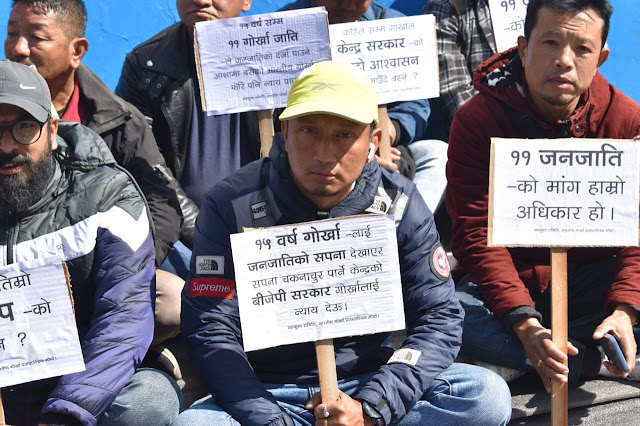
Promise of ST status for Gorkha communities is welcome, but it has its problems too
Don't Miss
Editorial, EOI, 23 April 2024 : The message from Union Home Minister Amit Shah to the people of the Darjeeling hills that the issue of inclusion of 11 left-out Gorkha communities in the Scheduled Tribe is under the active consideration of the Centre must be welcomed as it is a concrete assurance.
Of all the different possible options for a permanent political solution to the political issues of Darjeeling this is the easiest one; though viewed in isolation this, too, has its difficulties.
If all the Gorkha people are listed as scheduled tribes, it will pave the way for the inclusion of the Gorkhaland Territorial Administration under the Sixth Schedule of the Constitution. This will give the GTA more autonomy and more financial muscle.
There is precedent also about the formation of such an autonomous council rather close to the Darjeeling hills: the Bodoland Territorial Council in Assam. One advantage of this solution is that the concurrence of the West Bengal Assembly is already there for bringing the hill council under the provisions of the Sixth Schedule, in the form of are solution adopted during the rule of the Left Front; though in those days the hill body was known as the Darjeeling Gorkha Hill Council.
The two other possible options as PPS are more difficult. The formation of a separate Gorkhaland state has its own logistical problems; among them the limited geographical area of the hills of Darjeeling and Kalimpong and their proximity to the disturbed China border and the porous Nepal border.
Besides, West Bengal is unlikely to accept a second partition of the state. For the same reason, West Bengal is unlikely to accept the formation of the hill regions of Darjeeling and Kalimpong into a Union Territory.
The other possible PPS that has been suggested is the merger of Sikkim and Darjeeling. Sikkim, however, has serious objections to such a merger as the interests of the ethnic Sikkimese, protected under the Sikkim Subject Certificate Regulation and Article 371F will be compromised. With its long border with China which has not yet been ratified under a boundary agreement, Delhi is unlikely to risk a discontent in Sikkim.
But the scheduled tribe status for 11 left-out communities in Darjeeling and Kalimpong as a solution has its own problems because it will have its reverberations in Sikkim where it is a long-standing demand that 12 left-out Gorkha communities must be included in the Scheduled Tribe list. The 11communities in Darjeeling and the 12 communities in Sikkim being the same, except for one additional community in Sikkim, it will not be possible for Delhi to ignore the demand from Sikkim if it is accepted in the case of Darjeeling.
But Sikkim has the additional issue of special protection granted to the Bhutia and Lepcha communities in terms of ownership and transfer of land by virtue of Revenue Order no. 1.This too, being an old law of Sikkim, enjoys protection under Article 371F. '
The Bhutia – Lepcha communities are complaining that the share of their seats in panchayat bodies have already been compromised. For several reasons, it will be difficult for Delhi to compromise their interests. One has now to see what the Union Home Minister has to offer by way of a solution


0 Response to "Promise of ST status for Gorkha communities is welcome, but it has its problems too"
Post a Comment
Disclaimer Note:
The views expressed in the articles published here are solely those of the author and do not necessarily reflect the official policy, position, or perspective of Kalimpong News or KalimNews. Kalimpong News and KalimNews disclaim all liability for the published or posted articles, news, and information and assume no responsibility for the accuracy or validity of the content.
Kalimpong News is a non-profit online news platform managed by KalimNews and operated under the Kalimpong Press Club.
Comment Policy:
We encourage respectful and constructive discussions. Please ensure decency while commenting and register with your email ID to participate.
Note: only a member of this blog may post a comment.